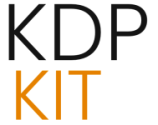Mastering Amazon Ads for KDP Authors: Strategies to Lower ACoS in 2025

In the increasingly competitive landscape of Amazon Kindle Direct Publishing (KDP), visibility is paramount. As of 2025, authors are leveraging Amazon Ads more than ever to connect with readers and drive sales. However, a common challenge faced by many is managing their Advertising Cost of Sales (ACoS) effectively. A high ACoS can quickly erode profits, making it crucial for authors to understand and implement strategies to lower it. This comprehensive guide will delve into the most effective methods for optimizing Amazon Ads for KDP authors in 2025, focusing on reducing ACoS while maximizing sales and return on investment.
Understanding ACoS and Its Importance for KDP Authors
ACoS, or Advertising Cost of Sales, is a key metric that measures the efficiency of your Amazon advertising campaigns. It’s calculated as: ACoS = (Total Ad Spend / Ad Revenue) × 100. For example, if you spend $25 on ads and generate $100 in sales from those ads, your ACoS is 25%. This means you’re spending $0.25 on advertising for every dollar in sales.
A lower ACoS generally indicates more efficient advertising, while a higher ACoS suggests that your campaigns may need optimization. For KDP authors, understanding your break-even ACoS is vital. This is the maximum ACoS you can sustain without losing money, typically calculated by your profit margin before advertising costs.
In 2025, the average ACoS across Amazon can range significantly by category, but a general benchmark for many is around 30-35%. However, aiming for an “amazing” ACoS, often considered 0-29%, is the goal for optimized campaigns.
Key Strategies to Lower ACoS on Amazon Ads for KDP
Reducing ACoS requires a multifaceted approach, focusing on keyword optimization, campaign structure, bidding strategies, and continuous analysis. Here are the most effective strategies for KDP authors in 2025:
1. Refine Your Keyword Targeting
Keywords are the backbone of any Amazon Ads campaign. Precise targeting ensures your ads are shown to readers actively searching for books like yours, minimizing wasted ad spend.
a. Thorough Keyword Research
Utilize tools like Helium 10, Publisher Rocket, or Amazon’s native keyword suggestions to identify high-volume, low-competition keywords relevant to your genre and book. Focus on long-tail keywords, which are more specific and often have lower costs per click and higher conversion rates.
b. Utilize Negative Keywords
Regularly review your search term reports to identify irrelevant or underperforming keywords. Adding these as negative keywords prevents your ads from showing for searches that are unlikely to convert, saving you money. For instance, if you sell alarm clocks, you wouldn’t want your ads to appear for “wall clocks.”
c. Single-Keyword Campaigns
For your most crucial keywords, consider creating single-keyword campaigns. This allows for precise bid management and budget allocation, ensuring your top performers get the attention they deserve.
2. Optimize Your Ad Campaigns and Structure
The way your campaigns are organized significantly impacts their efficiency and your ACoS.
a. Campaign Segmentation
Segment your campaigns based on product intent or performance. For example, create dedicated campaigns for your best-selling “hero” books, separate campaigns for new “launch” books with potentially higher ACoS targets, and even campaigns for older inventory needing clearance.
b. Automatic vs. Manual Campaigns
Start with automatic campaigns to gather data and discover converting search terms. Once you have sufficient data, transition these terms into manual campaigns for more control over targeting and bidding.
c. Single Product Ad Groups (SPAGs)
Group similar keywords for individual products within ad groups. This improves ad relevance and can lead to better conversion rates.
d. Leverage New Ad Types
As of 2025, Amazon has introduced or enhanced features like Sponsored Display for retargeting shoppers who viewed your book but didn’t purchase, and video ads. Utilizing these can expand your reach and capture different segments of potential readers.
3. Master Your Bidding Strategy
Bidding is a direct lever for controlling your ACoS. Smart bidding can lead to significant improvements.
a. Start with Conservative Bids
Begin with bids slightly below Amazon’s suggested bid and adjust based on performance. While some suggest very low bids (e.g., 6 cents), this can limit visibility. Instead, focus on bidding strategically on keywords that have a proven history of conversion.
b. Dayparting
Schedule your ads to run during peak shopping hours when conversion rates are typically higher. This ensures your ad spend is concentrated during the most effective times. For example, one seller saw ACoS drop from 40% to 22% by adjusting bids during peak hours.
c. Placement Bid Adjustments
Amazon allows for bid adjustments based on ad placement (e.g., top of search, product pages). Analyze which placements yield the best results and adjust your bids accordingly.
d. Dynamic Bidding Strategies
Experiment with Amazon’s dynamic bidding strategies. “Dynamic bid-down only” offers more control, while “Dynamic bid-up and down” can increase reach but may lead to fluctuating costs.
4. Analyze Performance Data and Iterate
Continuous monitoring and analysis are crucial for ongoing ACoS reduction.
a. Regular Campaign Audits
Conduct regular audits of your campaigns, ideally weekly. Review search term reports, identify underperforming keywords and ASIN targets, and pause or adjust them quickly.
b. Focus on High-Performing Keywords
Identify keywords that consistently drive sales with a low ACoS. Allocate more budget and increase bids for these keywords to maximize their impact.
c. Utilize Amazon’s Analytics Tools
Leverage tools like Brand Analytics to gain insights into customer behavior and campaign performance, allowing for more informed adjustments.
d. A/B Testing
Test different ad creatives, headlines, and even book covers within your campaigns to see what resonates best with your target audience.
5. Improve Your Organic Ranking and Listing Optimization
Your Amazon Ads performance is intrinsically linked to your book’s organic visibility and listing quality.
a. Optimize Book Listings
Ensure your book title, cover, description, and keywords are optimized for both readers and Amazon’s algorithm. A strong listing improves conversion rates, which in turn lowers ACoS.
b. Drive External Traffic
Amazon’s algorithm increasingly rewards books that attract traffic from external sources like author websites, social media, and email lists. This signals genuine interest and can boost organic ranking, complementing your ad efforts.
c. Encourage Reviews
High-quality, substantive reviews improve your book’s credibility and conversion rates. While not directly an ad strategy, it significantly impacts the effectiveness of your ad spend.
6. Leverage AI and Automation Tools
As AI becomes more integrated into advertising, leveraging these tools can provide a competitive edge.
a. AI-Powered Optimization
Consider using AI-powered tools for listing optimization and bid management. These tools can help identify the best keywords and automatically adjust bids based on performance data.
b. Ad Optimization Software
Specialized software can automate keyword harvesting, bid adjustments, and campaign launches, saving time and potentially improving results.
7. Protect TACoS, Not Just ACoS
While ACoS is crucial, consider your Total Advertising Cost of Sales (TACoS) as well. TACoS measures your ad spend against your total sales, including organic sales. Focusing solely on ACoS might lead to neglecting strategies that boost overall sales, even if they slightly increase ACoS in the short term.
Adapting to the Evolving Amazon KDP Algorithm
Amazon’s algorithm is continuously evolving, shifting from an SEO-based system to a performance-based one. This means Amazon prioritizes books that demonstrate strong performance, indicated by consistent sales and positive customer engagement. Your ad campaigns play a vital role in signaling this performance to Amazon. By driving sales through targeted ads, you can improve your book’s ranking, leading to more organic visibility and sales, creating a powerful flywheel effect.
In 2025, the emphasis is on quality content, genuine customer engagement, and sustainable sales. Authors who focus on these aspects, supported by well-optimized Amazon Ads campaigns, are best positioned for long-term success.
Conclusion
Lowering ACoS on Amazon Ads for KDP authors in 2025 is an achievable goal through strategic planning, diligent optimization, and a data-driven approach. By refining keyword targeting, structuring campaigns effectively, mastering bidding strategies, continuously analyzing performance, and optimizing your book’s overall presence on Amazon, you can significantly improve your ad efficiency. Remember that Amazon advertising is an ongoing process of testing, learning, and adapting. Stay informed about new features and algorithm changes, and consistently apply these strategies to drive profitable sales for your books.





